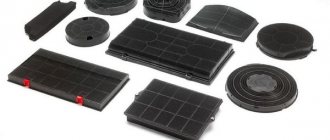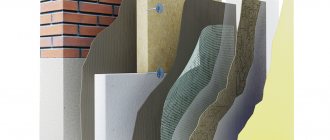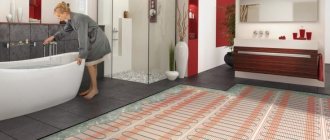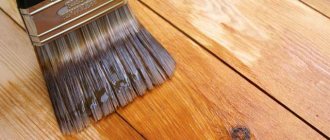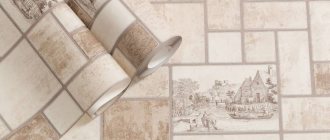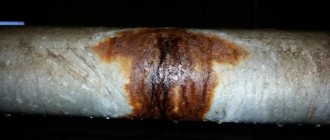4.1. Upon completion of installation work, installation organizations must carry out:
testing heating systems, heat supply, internal cold and hot water supply and boiler rooms using the hydrostatic or manometric method with drawing up a report in accordance with the mandatory Appendix 3, as well as flushing systems in accordance with the requirements ï. 3.10 of these rules;
testing of internal sewerage and drainage systems with drawing up a report in accordance with the mandatory Appendix 4;
individual tests of installed equipment with drawing up a report in accordance with the mandatory Appendix 1;
thermal testing of heating systems for uniform heating of heating devices.
Testing of systems using plastic pipelines should be carried out in compliance with the requirements of CH 478-80.
Tests must be carried out before finishing work begins.
Pressure gauges used for testing must be calibrated in accordance with GOST 8.002-71.
4.2. During individual testing of equipment, the following work must be performed:
checking the compliance of the installed equipment and the work performed with the working documentation and the requirements of these rules;
testing equipment at idle and under load for 4 hours of continuous operation. At the same time, the balancing of wheels and rotors in pump and smoke exhauster assemblies, the quality of the stuffing box packing, the serviceability of starting devices, the degree of heating of the electric motor, and compliance with the requirements for assembly and installation of equipment specified in the technical documentation of the manufacturers are checked.
4.3. Hydrostatic testing of heating systems, heat supply systems, boilers and water heaters must be carried out at a positive temperature in the premises of the building, and cold and hot water supply systems, sewerage and drains - at a temperature not lower than 278 K (5 ° C). The water temperature should also not be lower than 278 K (5°C).
GENERAL PROVISIONS
1. GENERAL PROVISIONS
1.1. General requirements for leak testing methods are in accordance with GOST 24054-80. The following main leak testing methods are used for pipeline connections: hydrostatic, manometric, bubble, mass spectrometric and halogen.
For an approximate assessment of the limits of applicability of these methods, the ranges of indication limits shown in the drawing are used.
Ranges of flow indication limits when atmospheric air leaks through the joint of a evacuated joint for the following leak test methods: 1 - bubble; 2 - hydrostatic without the use of special indicators; 3 - hydrostatic using special indicators; 4 - gas gauge; 5 - manometric liquid; 6 - halogen; 7—mass spectrometric.
REQUIREMENTS FOR BASIC TEST METHODS
2.1. Hydrostatic method
2.1.1. The method is carried out using a compressor method, both with and without the use of indicator masses applied to the controlled surface. Description of the method - according to GOST 24054-80.
2.1.2. When testing, the connection must be completely bled of air before increasing pressure. If, during water strength tests, the connection was filled with cold water and dew appeared on its walls, then leak tests should be carried out after it has dried.
2.1.3. The test pressure during testing is determined by the formula:
where is the conditional pressure (excessive pressure that the connection can withstand at normal temperature of the working environment under operating conditions);
— coefficient depending on the conditional pressure is determined from the table.
2.1.4. During testing, a gradual and smooth increase and decrease in pressure must be ensured. Do not tap the connection under pressure. If drops, spots and (or) a sharp drop in pressure are detected, the tests are stopped and the connections are inspected to determine the causes of the defect.
2.1.5. The test time for one connection using the hydrostatic method is at least 3 minutes.
2.2. Manometric method
2.2.1. The method is implemented in the following ways: compression, vacuum, chamber, blowing and comparison with the flow from a calibrated leak.
2.2.2. Descriptions of compression, vacuum and chamber methods - GOST 24054-80.
2.2.3. Tests using the blowing method are carried out in the following order:
evacuate the internal cavity of the connection;
take the pressure gauge reading;
blow the joint joint with a test gas, after which the pressure gauge reading is taken again, and the change in pressure is determined using the formula
where is the sensitivity of the pressure gauge with respect to the test gas;
- reading of a pressure gauge calibrated in air;
— pressure gauge reading taken after blowing with test gas.
The leakage of the connection is judged by the magnitude of the pressure change.
Note. It is recommended to use a test gas that satisfies the following inequality
where is the speed of the pump when pumping air and test gas from the connection;
— flow of air and test gas through the joint;
— sensitivity of the pressure gauge in relation to air.
2.2.4. Tests by comparison with the flow from a calibrated leak are carried out in the following order:
the internal cavity of the connection is evacuated until the pressure in it reaches a fixed value;
apply a test gas to the leak and, changing its pressure, select such a flow through the leak so that the vacuum gauge shows the same value;
using the graph attached to the calibrated leak certificate, determine the flow corresponding to this pressure;
Leakage is judged by the flow rate.
2.2.5. When testing using the vacuum method, it is necessary to determine, based on the pressure gauge readings, the moment in time when the pressure in the internal cavity of the connection begins to change linearly, and then, after a period of time, measure the pressure in the internal cavity of the connection. The flow through the joint is calculated using the formula
where is the pressure inside the connection at the moment of time;
— pressure inside the connection at the moment of time;
— volume of the internal cavity of the connection.
Note. In connections with large gas emissions, it is advisable to connect the pressure gauge through a cooled trap.
2.2.6. It is recommended to estimate the permissible pressure drop when testing using the compression method using the formulas given in Reference Appendix 1.
Note. If a pipeline or a section of a pipeline where the working medium is liquid is tested using the compression method, then the ratio of gas pressure to the working pressure of the liquid should not be lower than 0.1.
2.2.7. The temperature error in determining the change in pressure inside a connection or chamber is estimated using the formula
where is the test gas pressure;
— absolute gas temperature;
— change in temperature during measurement.
2.3. Bubble method
2.3.1. The method is carried out in the following ways: compression, vacuum, soaping.
Description of methods - according to GOST 24054-80.
2.3.2. If water is used as an indicator liquid, then to increase its transparency, aluminum-ammonium alum is added at the rate of 500 g of alum per 3 m of water, after which the solution should be thoroughly mixed and kept for one and a half days.
2.3.3. If it is necessary to increase sensitivity, it is recommended to add a surfactant to the indicator liquid that does not have a harmful effect on the materials of the connection parts.
2.4. Mass spectrometric method
2.4.1. The method is carried out in the following ways:
vacuum chamber, pressure testing in the chamber, blowing, probe, accumulation, accumulation at atmospheric pressure, selective sampling of test gas.
2.4.2. Descriptions of methods of a vacuum chamber, pressure testing in a chamber, blowing, probe, accumulation at atmospheric pressure - according to GOST 24054-80.
2.4.3. It is recommended to carry out methods of a vacuum chamber and pressure testing in a chamber on installations, the diagrams of which are given in reference Appendix 2.
2.4.4. Tests using the accumulation method are carried out in the following order:
the test connection is evacuated, a zeolite pump is connected to it and the connection is kept under vacuum for a certain time, after which it is connected to a leak detector and the background flow of the test gas is measured;
place the connection in a chamber, fill it with a test gas or a mixture of gases containing a test gas, and hold it for a certain time, after which it is connected to a leak detector and the flow of the test gas is measured;
Leaks are judged by the difference in leak detector readings.
The recommended test setup is shown in Reference Appendix 2.
2.4.5. Tests using the method of selective sampling of test gas are carried out in the following order:
a test gas is supplied to the connection cavity;
connect the chamber to the leak detector through an element selectively permeable to the test gas;
The leakage of the connection is judged by the amount of test gas diffused through the element.
The recommended test setup is shown in Reference Appendix 2.
2.4.6. When tested using the blowing method, the speed of movement of the blower along the joint joint should not be higher than 1.5 mm/s.
2.4.7. When testing using the probe method, the speed of movement of the probe along the joint joint should not go beyond the range of 2...5 mm/s if the test gas is helium, and 0.5...2 mm/s if the test gas is argon.
2.4.8. The sensitivity threshold of leak detection equipment is in accordance with GOST 24054-80.
Note. The sensitivity threshold of the installation implementing a particular method may differ significantly from the sensitivity threshold of the equipment. Thus, when implementing the accumulation method, the sensitivity threshold of the installation is several orders of magnitude higher than that of the leak detection equipment included in this installation, and when implementing the probe method, it is several orders of magnitude lower.
2.4.9. Calibration of mass spectrometric leak detectors is carried out using a diffusion helium leak of the “Gelite” type in accordance with the description and operating instructions attached to each leak sample. As a result of calibration, the value of the scale division () of the leak detector output device is determined using the formula
where is the helium flow from the “Gelite” leak;
— steady reading of the leak detector from the “Gelit” leak;
— leak detector reading due to background helium.
2.5. Halogen method
2.5.1. The method is carried out using blowing and probe methods.
2.5.2. Descriptions of methods - according to GOST 24054-80.
2.5.3. The sensitivity threshold values for leak detection equipment are in accordance with GOST 24054-80.
2.5.5. The room in which the halogen method is tested must have supply and exhaust ventilation. The halogen content in it should not exceed 10%.
2.5.6. When testing using the blowing method, leak detectors with a vacuum sensor are used, while the probe method uses an atmospheric sensor.
2.5.7. Leak detectors with a vacuum sensor are calibrated using one of the following methods:
by changing the partial pressure of the test gas, for which a test gas is introduced into the internal cavity of the connection through the leak and the associated change in the leak detector readings is compared with the change in pressure recorded by the pressure gauge;
according to the flow of test gas through a calibrated diaphragm.
Note. The first method is recommended for connections pumped out at pressures less than 0.1 Pa, the second - for pressures greater than 0.1 Pa.
2.5.8. Leak detectors with an atmospheric sensor should be calibrated using a Halot halogen leak in accordance with the description and operating instructions attached to each leak sample. As a result of calibration, the division price () of the scale of the leak detector output device is determined according to the formula
where is the flow from the halogen leak;
— leak detector signal from this leak.
Note. Due to the fact that the sensor may lose sensitivity from long-acting portions of halogens, periodic checking of its initial current is necessary. To restore the sensitivity of the sensor, it requires long-term training at increased emitter heat and a clean air pressure of 10 Pa.
Manometric method
Manometric method
The manometric method is the simplest and most convenient for assessing the degree of tightness of a vacuum system that has its own means of pumping out and measuring pressure, since it does not require special equipment. To monitor the tightness, any pressure gauge transducer available in the system can be used. This method can determine the total leakage into the system and single leaks can be identified.
To determine the total leakage, the vacuum system under test is disconnected from the pumping means and a graph of pressure changes in the isolated vacuum system is plotted. There are three possible dependences of pressure changes over time in an isolated vacuum system. Dependency 1, shown in Fig. 7-1, indicates strong leakage; dependence 3 – about the absence of leakage. In the latter case, the change in pressure in the vacuum system is due to gas evolution, which decreases as the pressure increases. After achieving dynamic equilibrium, the pressure in the system stabilizes. Curve 2 corresponds to the condition when the change in pressure in the system from PQ to Pi is the total result of gas release and leakage. Subsequently, the pressure in the system, mainly due to leakage, increases linearly with time. Knowing the volume of the system, the change in pressure AP in the linear section of the curve and the time D/ during which the pressure change occurred, it is easy to calculate the amount of total leakage
To search for leaks, any pressure gauge transducers can be used, the readings of which depend on the type of gas, for example, electronic ionization and thermoelectric ones. The search for leaks comes down to the following. After establishing pressure in the vacuum system, the area suspected of leakage is blown with a test gas or moistened with a liquid test substance. A change in the vacuum meter reading indicates the presence of a leak. The greatest effect is achieved by working with liquid test substances: acetone, alcohol and ethers. Small amounts of liquid entering the vacuum system through a leak, evaporating in the vacuum, sharply increase the overall pressure in the system
Finding leaks using liquid test substances, along with great efficiency, has its own inconveniences. The rise of liquid through the capillary of small leaks, less than 10~7 W (10~3 l-μm Hg/s), occurs over a period of several minutes to several hours. Therefore, the vacuum gauge can react to the test substance at the moment when another area of the surface is being examined. This will give rise to a false idea of the location of the leak. To ensure that the location of the leak is correctly detected, remove the test substance (if possible, warm up the tested surface, for example, light burner flame) and after establishing pressure in the system, repeat the tests
Working with gaseous test substances is not as effective; there is less change in the readings of the vacuum gauge, but the reaction of the vacuum gauge to the gas occurs almost instantly due to the high penetrating ability of the gas
The minimum size of leaks detected by the manometric method depends on the total pressure in the system, which in this case is background. As leaks are detected and eliminated, the established pressure in the system decreases and, accordingly, the probability of detecting smaller and smaller leaks increases
It is advisable to search for leaks when the needle of the indicating device of the vacuum meter is at the end of the scale of the device. If the needle of the vacuum meter is at the beginning of the scale, it is advisable to slightly reduce the pumping speed by closing the high-vacuum shutter and switch the vacuum meter to a coarser range. In this case, the relative minimum recorded change in the readings of the vacuum meter will be increased.
